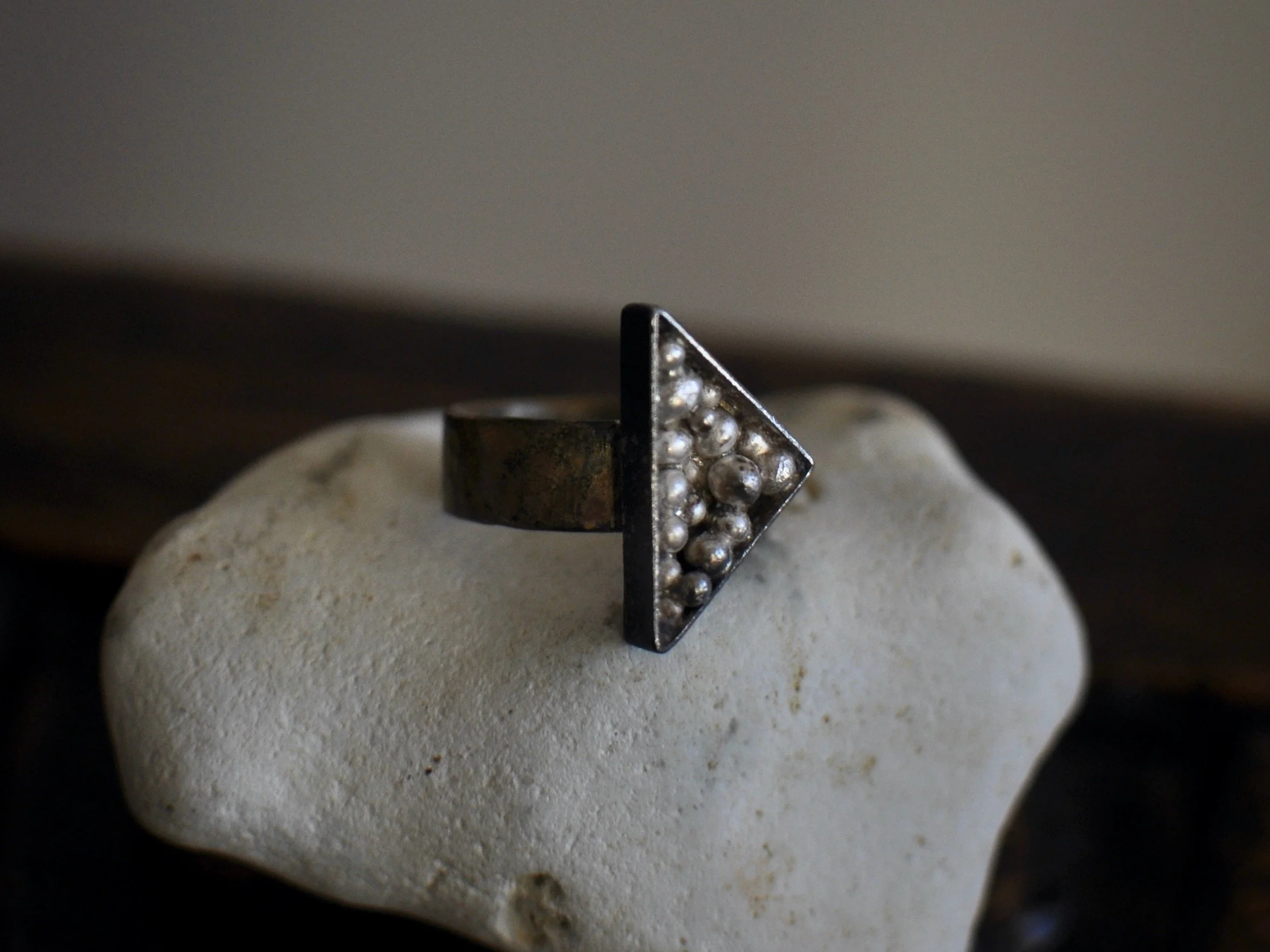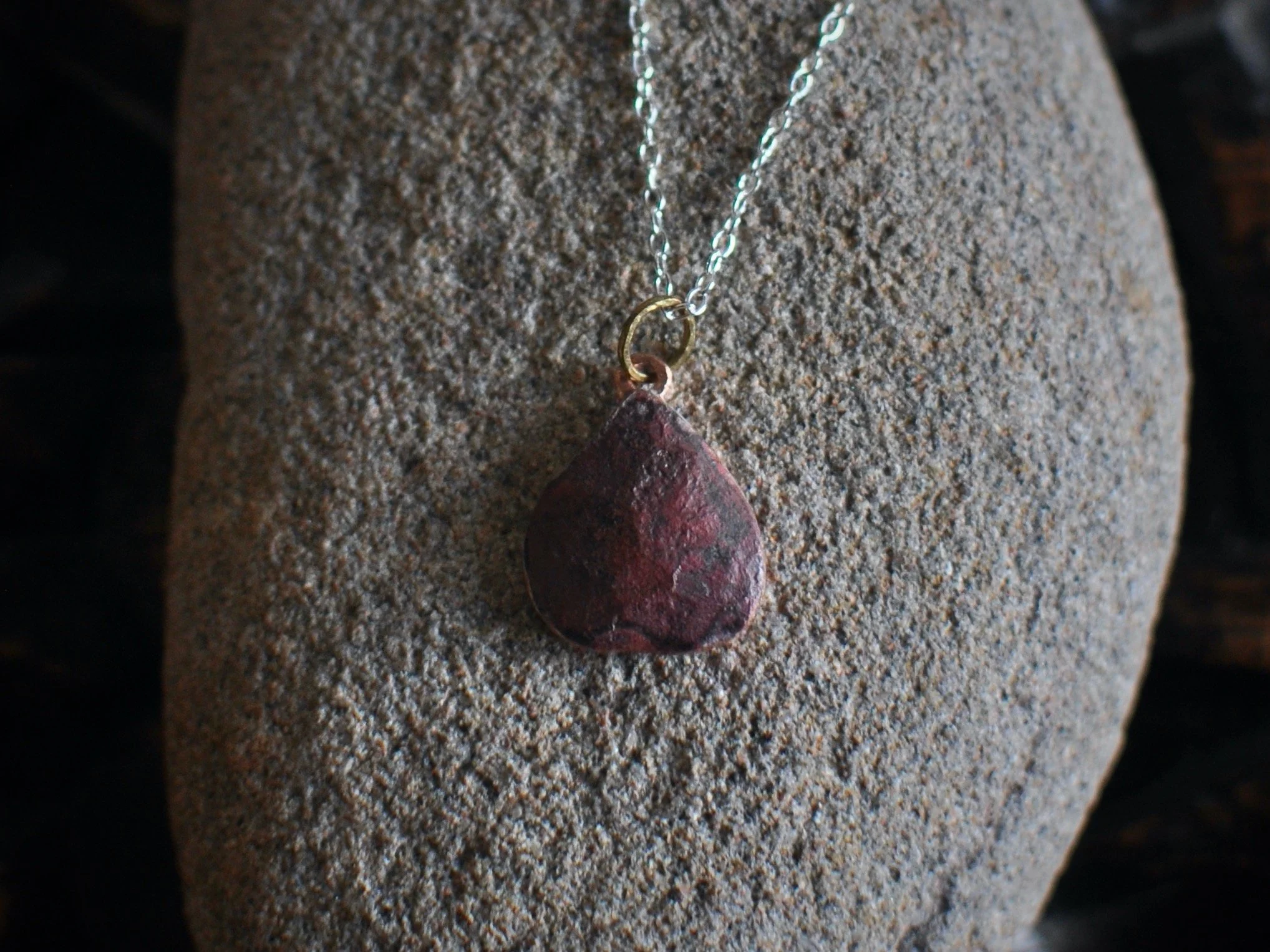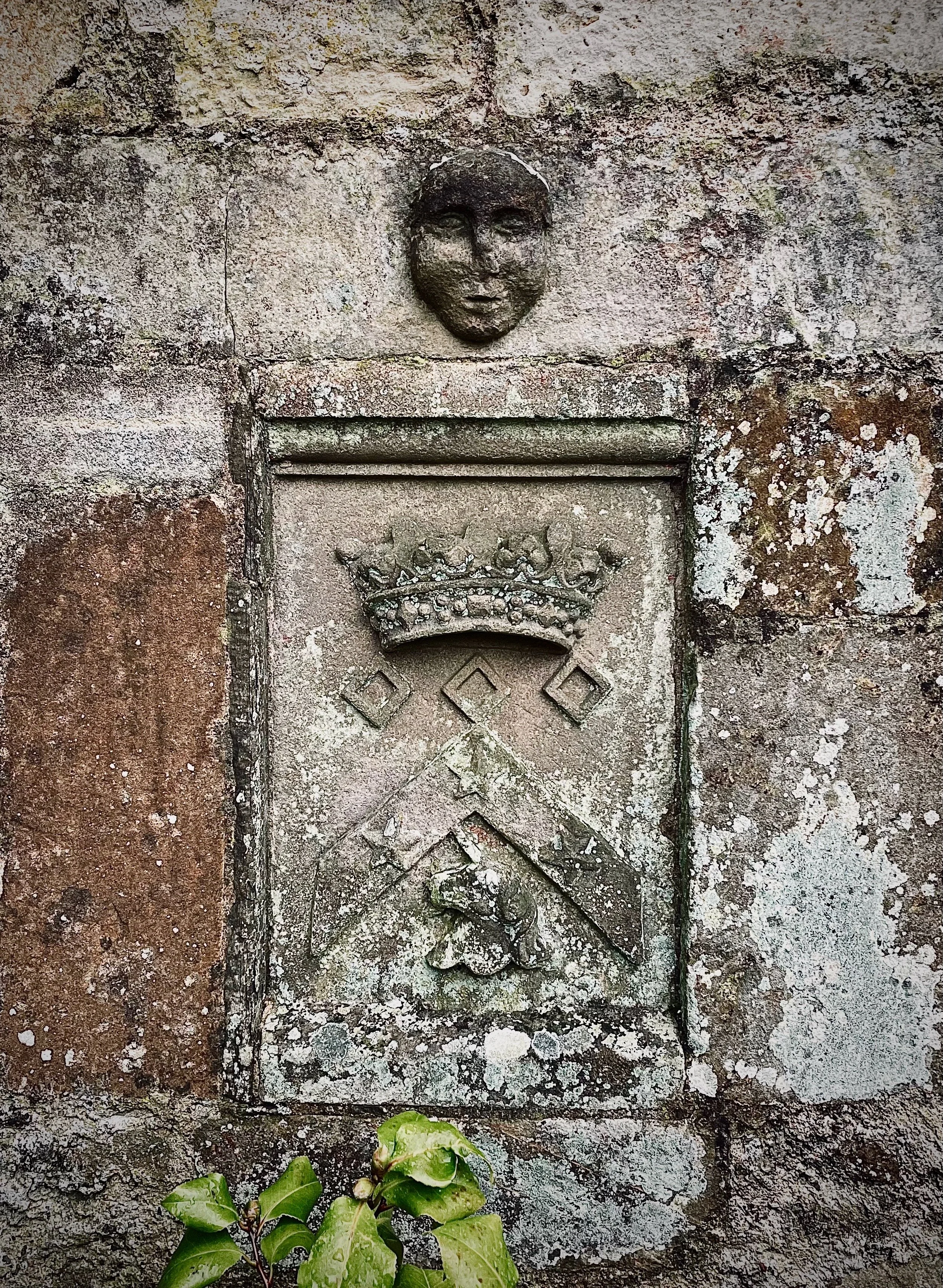December Photo Diary 2023
- December 2023 -
- 24 SEASONS IN SCOTLAND -
Greater Snow [7-21 December] / Winter Solstice [22 December-5 January]
二十四節気:大 雪 / 冬 至
COUNTRY WALK JOURNAL
The old railway bridge no.30, on the way to Barr Castle, National Cycle Route 7, Lochwinnoch
Hello everyone! I hope you are enjoying the festive season.
In our little village in Scotland, we had the first snowfall and a 10-day consecutive below-zero period at the beginning of the month. Now the sunset is closer to 3:30 pm, with the sunrise getting later, approaching 9 am as we head towards the winter solstice.
皆様、お元気ですか?あっという間に師走ですね。
我々の住むスコットランドの村では今月初旬に初雪、その後氷点下が10日続きました。日の入りは3時半近く、日の出は冬至に向かって9時近くまで延びます。
Rabbit Hole, Lochwinnoch
For this final month of 2023, I'm sharing something a little different. I hope you enjoy the blog for December.
さて2023年最終月の今月は、少し趣向を変えた内容でお送り致します。12月のフォトブログお楽しみ頂けます様に。
- 24 SEASONS COLLECTION -
An experimental metal work for a jewellery collection called, Twenty-four Seasons based on the ancient Japanese calendar. We have very distinctive four seasons in Japan and a year is divided further into 24 Seasons, called Niju-shi sekki. Still to this modern period, we have many traditional customs and events according to the Niju-shi sekki calendar.
二十四節気は地球を中心とみた時に、太陽の通る道、黄道を24に分けた節気。気候風土や神事、農作業との繋がりから、各々の節気が意味づけられているそうです。今月は、二十四節気にちなんだコレクションをご紹介致します。
SPRING 春
1 Beginning of Spring
立 春
春の始まり。四立の一つ
[ 4 - 18 FEB ]
The kanji character "立" in Risshun 立春 (the first day of spring) signifies the emergence of something that has not existed until now. The motif of the ring is the "Tatewaku 立涌" pattern from the Heian period (794-1185 AD ), symbolizing steam rising from the ground in spring, celebrating the arrival of a new season.
立春の「立」には、今まで存在しなかったものが、姿を現すという意味があるそう。リングのモチーフは平安時代の有職紋様の「立涌」。春、温まり始めた地面から湧き上がる蒸気を表し、新しい季節を祝うとされます。
2 Rain Water
雨 水
雪が雨に変わる時節
[ 19 FEB - 5 MAR ]
The season when snow turns into rain. A ring inspired by the rain drops, the source of life, flowing gracefully like the spring river with melted snow. The 3rd of March marks the festival of "Joshi" (上巳), one of the five traditional seasonal celebrations. In ancient times, it was also a ritual to purify the mind and body with pure water during this festival.
The game developed from this is called Kyokusuien. Participants put a sake cup in a stream, and as the cup floats downstream, they compose poems before the cup passes in front of them. The poems are then placed on the next cup. If one fails to complete a poem in time, they must drink the sake from that cup as a penalty.
雪解け水が悠々と流れる春の川。生命の源である雨の粒をモチーフにしたリング。
三月三日は、五節句の一つである上巳(じょうし)の節句。元々は清らかな水で心身の穢れを祓うための中国の習俗が原型。そこから発展させた遊びが曲水宴。上流から盃を流し、盃が自分の前を通り過ぎる迄に詩歌をしたため、次の盃にのせる。間に合わなければ罰として、その盃の酒を飲むと言うルールだったそう。
[ The Five Festivals, Go-sekku ]
Traditional customs observed during the changing seasons, established during the Edo period to dispel evil spirits and pray for good health. The five designated auspicious days are as follows:
[ Jinjitsu no Sekku ]: January 7th ( Festival of Seven Herbs* )
[ Joshi no Sekku ]:March 3rd (Peach Festival)
[ Tango no Sekku ]: May 5th ( Iris Festival・Daimyo Oak Festival )
[ Shichiseki no Sekku ]:July 7th ( Star Festival )
[ Choyo no Sekku ]:September 9th ( Chrysanthemum Festival )
[ 五 節 句 ]
季節の変わり目に行われる伝統的な風習。邪気を払い、無病息災を祈願する江戸時代に定められた5つの式日。五節供(ごせっく)に同じ。
[ 人日の節句 ]:1月7日(七草)
[ 上巳の節句 ]:3月3日(桃)
[ 端午の節句 ]:5月5日(菖蒲・柏)
[ 七夕の節句 ]:7月7日(笹)
[ 重陽の節句 ]:9月9日(菊・栗)
3 Insects Awaken
啓 蟄
冬籠をしていた虫達が動き出す頃
[ 6 - 20 MAR ]
The time when insects that have been in winter hibernation begin to stir. Inspired by Keichitsu, Insects Awaken, a ring featuring claw-like designs reminiscent of the legs of insects, which typically have three pairs (6 legs).
啓蟄に因み、昆虫の3対6本脚を模した爪留めの燻リング。
4 Vernal Equinox
春 分
昼と夜の長さが等しくなる日
[ 21 MAR - 4 APR ]
The time when the day and night are of equal length, marking the transition between seasons in the natural world. Both the spring equinox and the autumn equinox signify pivotal points in the seasonal cycle. The design is inspired by the hatching of eggs, symbolizing new life during the season when the cycle of life unfolds.
春分と秋分は、自然界における季節の変わり目。生命の循環が起こる季節に、新しい命を象徴する孵化する卵の殻をイメージしたデザイン。
[ Shiryu / Nishi-Nibun ]
[ Shiryu ]: The beginning of each season – Risshun・Rikka・Risshu・Rittou.
[ Nishi ]:Geshi (Summer Solstice)・Toji (Winter Solstice)
In the northern hemisphere, Geshi is the day with the longest daylight hours during summer, while Toji is the day with the longest night hours during winter.
[ Nibun ]:Shunbun (Spring Equinox)・Shubun (Autumn Equinox)
The days when the sun rises due east and sets due west
Just as Risshun, the beginning of spring, is positioned "midway between Winter Solstice and Spring Equinox," each of the Shiryu is precisely positioned at the midpoint between each solstice and equinox.
[ 四立 ] [ 二至二分 ]
立春 春分 立夏 夏至 立秋 秋分 立冬 冬至
[ 四立 しりゅう ]:四季の始まり - 立春*・立夏・立秋・立冬
[ 二至 にし ]:北半球で、昼が最も長くなる夏至・夜が最も長くなる冬至
[ 二分 にぶん ]:太陽が真東から上り、真西に沈む日 - 春分・秋分
*立春が「冬至と春分の中間」に位置する様に、四立は各々が二至二分の丁度中間となる。
5 Pure and Clear
晴 明
明るい光の溢れる清く美しい季節
[5-19APR]
A season filled with bright, radiant light, portraying purity and beauty. An open ring in the shape of eggs. The character 卯 (U) in the ancient lunar month of April, referred to as "U zuki 卯月," signifies "beginning" or "birth," symbolizing the commencement of new things.
卵型のオープンリング。四月の陰暦名である「卯月」の卯は“初”や“産”を意味し、物事の始まりを表します。
6 Grain Rains
穀 雨
春雨が百穀を潤す時季
[ 20 APR - 5 MAY ]
The season when spring rain nourishes the myriad grains. The design features eight seed pearls arranged to resemble raindrops. Around early May, on the 88th day from Risshun (the beginning of spring), known as "Hachiju-hachiya," it is a day marking a seasonal transition. The auspicious overlapping eights suggest good fortune, signifying the start of tea picking and seed planting.
雨粒に見立てた種真珠を8つ並べたデザイン。5月初め、立春から88日目を数える”八十八夜 はちじゅうはちや” は雑節の一つで、末広がりの八が重なり縁起の良いことから、茶摘みや種蒔きを始める日とされます。
[ Zassetsu ]
Unlike the Chinese-imported 24 solar terms and the five traditional seasonal festivals, Zassetsu represents unique Japanese customs born from local lifestyle, climate, and traditions, primarily serving as seasonal indicators for agricultural activities.
[ Setsubun ]:The day before Risshun (around February 3rd)
[ Higan ]:A period of 7 days centered around both Shunbun (spring equinox) and Shubun (autumn equinox)
[ Sha nichi ]:The day closest to Shunbun and Shubun in the year of the "tsuchinoe" (Earth) sign
[ Hachiju-hahci ya ]:The 88th day from Risshun (around May 2nd)
[ Nyubai ]:The 135th day from Risshun (around June 11th)
[ Han-gesho ]:The 11th day from Geshi (summer solstice, around July 2nd)
[ Doyo ]:18 days before each of Risshun, Rikka, Risshu, and Ritto
[ Nihyaku-to ka ]:The 210th day from Risshun (around September 1st)
[ Nihyaku-hatsu ka ]:The 220th day from Risshun (around September 11th)
[ 雑 節 ]
中国伝来の二十四節気や五節句とは異なり、日本独自の生活文化、気候風土より生まれた習俗。 主に農作業の目安となる季節の印。
[ 節分 せつぶん ]:立春の前日 (2月3日頃)
[ 彼岸 ひがん ]:春分と秋分の各々を中日とする7日間
[ 社日 しゃにち ]:春分と秋分に最も近い戊の日
[ 八十八夜 はちじゅうはちや ]:立春から88日目 (5月2日頃)
[ 入梅 にゅうばい ]:立春から135日目 (6月11日頃)
[半夏生 はんげしょう ]:夏至から11日目 (7月2日頃)
[ 土用 どよう ]:立春、立夏、立秋、立冬の前各18日間
[二百十日 にひゃくとおか ]:立春から210日目(9月1日頃)
[二百二十日 にひゃくはつか ]:立春から220日目 (9月11日頃)
SUMMER 夏
7 Beginning of Summer
立 夏
夏の始り。「四立」の一つ
[ 6 - 20 MAY ]
It is a time when fresh leaves flourish, and the signs of summer begin to be felt. The front features the deep blue of the summer sea, while the back is adorned with the sky-blue colour of a clear May day, achieved through the use of traditional Japanese enamel.
若葉が繁り、夏の気配を感じる始める頃。表には深い青の夏の海、裏は空色の五月晴れをイメージした本七宝 釉薬を施しています。
8 Lesser ripening
小 満
大地が生命力に満ち溢れる時季
[ 21 MAY - 5 JUN ]
The season when the earth brims with vitality. The term "Shoman" is said to originate from the idea of feeling a releaf, a little content (sho-manzoku) for farmers when seeds have grown successfully. The photo features a band ring adorned with seed pearls.
小満とは、農作業で蒔いた種の成長にひと安心 (小満足)する頃という語源があるそうです。写真は、種真珠をあしらったバンドリング
9 Grain Beards and Seeds
芒 種
芒(のぎ、針状の穂先)をもつ麦や稲などの種を蒔く時季
[ 6 - 20 JUN ]
The season for sowing seeds of grains like barley and rice, which have awns (needle-like tips). The charm pendant is adorned with 16 silver grains resembling miniature manju (sweet buns) or dango (sweet rice dumplings)
On the 16th day of the sixth month in the lunar calendar, the "Kasho no Gi" or "Kasho Chodai" ceremony involves offering sweets and rice cakes associated with the number sixteen to the gods, symbolizing purification and praying for good health in the imperial court. During the Edo period (1603-1868), it was considered a significant event as one of Gosekku, the Five traditional seasonal festivals, representing the indulgence in sweet treats to invigorate one's spirit and ward off the summer heat.
ミニチュアの饅頭や団子に見立てた銀の笹吹きを16粒あしらったチャームペンダント。
旧暦六月十六日の「嘉祥の儀 / 嘉祥頂戴」は、十六の数にちなんだ菓子や餅を神前に供え、厄祓いをして健康招福を祈る宮中行事。当時は贅沢であった甘いもので英気を養い、暑気払いをする意味を込め、江戸時代には五節句と並び重要な行事であったと言われます。
10 Summer Solstice
夏 至
一年で最も日が長く、夜が短い日
[ 21 JUNE - 6 JULY ]
The day with the longest daylight and the shortest night in the year, known as the summer solstice.
A unique ring inspired by the traditional Japanese sweet "Minazuki."
On June 30th, the halfway point of the year, the "Nagoshi no Harae" ritual is performed to cleanse oneself of impurities from the past six months and pray for health and protection in the latter half of the year. The traditional wagashi (Japanese sweet) "Minazuki," used in this ceremony since the Nara period ( 710-784 AD ), features red azuki beans to purify evil spirits. The triangular shape represents freshly shaved ice, symbolizing a refreshing way to dispel summer heat. The silver grains are designed to resemble red azuki beans, which are believed to ward off evil spirits.
和菓子 水無月を模したユニークなリング。
6月30日、”茅の輪くぐり”と呼ばれる複雑な作法を要する儀式と共に、一年の折り返しとなるこの日に半年分の穢れを落とし、後半の健康と厄除けを祈願する「夏越しの祓 なごしのはらえ」。西日本を中心とするこの神事で欠かせない伝統的な和菓子「水無月」は、邪気を祓う小豆をのせ、外郎の三角形が暑気を払う削りたての氷を模しているそう。
11 Lesser Heat
小 暑
暑さが次第に強まる時季
[ 7 - 22 JUL ]
The season when the heat gradually intensifies. The custom of writing wishes on tanzaku (small strips of paper) during the Tanabata Star Festival on the 7th July is said to originate from the practice of grinding ink with night dew collected on the leaves of taro plants. People would then write poems on Kaji (a deciduous broadleaf tree) leaves, expressing a wish for improvement in waka poetry and calligraphy skills. The culture of making wishes through such charming traditions is fascinating. The pendant, crafted from brass, copper, and silver, is designed to resemble the form of a tanzaku.
7月7日、七夕の節句に欠かせない短冊の風習は、里芋の葉に溜まった夜露で墨を磨り、梶の葉に歌をしたため、和歌や文字の上達を祈願した事に由来するのだとか。なんとも趣のある願い事の文化。真鍮や銅、銀を用いたペンダントは短冊のフォルムに見立てています。
12 Greater Heat
大 暑
暑さが最も厳しく感じられる頃
[ 23 JULY - 7AUGUST ]
The time when the heat is felt most intensely. The "Sora Suzu", Space Chime, is reminiscent of Japan's summer traditions, the night sky filled with fireworks and the wisdom of cooling down from the heat, wind chimes.
スペースチャイム “宙 鈴”は、日本の夏の風物詩、花火の打上がった夜空や、涼の知恵、風鈴へ思いを馳せたデザインです。
AUTUMN 秋
13 Beginning of Autumn
立 秋
暦の上での秋の始まり
[ 8 - 22 AUG ]
The official beginning of autumn in the ancient lunar calendar. In Japan, during the season of Obon (also known as Bon, combines the ancient Japanese belief in ancestral spirits with a Buddhist tradition to pay respect to one's ancestors.), various traditional events such as bonfires, floating lanterns, and Bon dances are held in many regions to honour the spirits of ancestors and departed loved ones. The silver charm necklace symbolizes connections.
お盆の時季、多くの地域で迎え火や精霊流し、盆踊りなど先祖や故人の霊を供養する様々な伝統行事が行われます。銀のチャームネックレスは、繋がりを象徴。
14 Manageable Heat
処 暑
次第に暑さが和らぎ始める時期
[ 23 AUG - 7 SEP ]
The time when the heat gradually begins to ease. The design resembles doubled small, round chrysanthemums.
The Choyo no Sekku (the 9th of September), one of the Go-sekku, Five Traditional Seasonal Festivals, is also known as the Chrysanthemum Festival, named after the seasonal flower. In Chinese Yin-Yang philosophy, odd numbers, with 9 being the maximum, were considered the most auspicious. The custom of celebrating Choyo on the double-nine day of the ninth month, when yang energy is at its peak, spread to Japan and took root among the aristocracy during the Heian period (794-1185 AD ).
小さな丸い菊を見立て、二つ重ねたデザイン。
五節句の一つである重陽の節句は、季節の花に因み「菊の節句」とも呼ばれています。中国の陰陽道では、陽数とされる奇数の最大9は最も縁起が良いとされました。陽の重なる9月9日を重陽と呼んで祝う風習が日本にも伝わり、平安時代の貴族の間で根付きました。
15 White Dew
白 露
草木に降りた露が白く輝く時季
[ 8 - 22 SEP ]
The season when dew on grass and trees glistens white. Known as the Mid-Autumn Festival or Jugoya, it is a celebration of the full moon on the 15th night of the eighth month. Another name, "Imo Meigetsu," stems from the offering of newly harvested taro as a symbol of autumn's abundance. People pray for a bountiful harvest and express gratitude. Moon-viewing decorations often include vines like kudzu and grapes alongside susuki (Japanese pampas grass) to strengthen the connection with the moon.
中秋の名月、十五夜。秋の実り、初物の里芋を供えて祝ったことから「芋名月」という別称も。人々は月に豊作を祈り、感謝を捧げます。月見飾りにはススキと共に、葛や葡萄など蔓植物を飾ると、月との繋がりが強まると考えられました。
Jugo ya, Juusan ya, Tokan ya Moon
On the 13th day of the ninth month in the lunar calendar, known as "Juusanya" or "Jugoya," it is a month later than the more famous "Jugoya" (the fifteenth night). The slightly waning moon, referred to as the "later moon," is cherished alongside the harvest moon during the Mid-Autumn Festival.
Juusanya is affectionately known as "Kuri (chestnuts)-meigetsu" or "Mame (beans) Meigetsu." People celebrate by offering chestnuts, soybeans, and other autumn harvests alongside susuki (Japanese pampas grass) as moon-viewing decorations, expressing gratitude for the autumn bounty and offering prayers for a prosperous harvest.
[ Jugo ya ]:A day to pray for a bountiful harvest this year (also known as Imo Meigetsu - Taro Harvest Moon)
Decorate with rice ears or susuki before the harvest season and offer taro.
On the 15th day of the eighth month in the lunar calendar (around mid to late September to early October in the Gregorian calendar).
[ Juusan ya ]:A day to express gratitude for this year's harvest (also known as Kurimeigetsu, Mame Meigetsu)
Offer rice-flour dumplings, beans, chestnuts, and other harvested crops.
On the 13th day of the ninth month in the lunar calendar (around October in the Gregorian calendar).
[ Tokan ya ]:A day to pray for next year's abundance (also known as Inoko Matsuri - Boar's Festival)
Offered items include pounded rice cakes. It is the day when the deity of the rice fields returns to the mountains.
On the 10th day of the tenth month in the lunar calendar (around early November in the Gregorian calendar).
十五夜 十三夜 十日夜の月
旧暦九月十三日は、十五夜よりひと月遅れの「十三夜」。満月からわずかに欠けた月は「後の月」と呼ばれ、中秋の名月とともに愛でられてきました。
十三夜は「栗名月」「豆名月」という名で親しまれ、月見飾りとしてススキとともに栗や大豆などを供え、秋の実りに感謝し豊作への祈りを捧げます。
[ 十五夜] :今年の豊作を祈願する日(別名:芋名月)
実りの前の稲穂またはススキを飾り芋を供えます。
旧暦8月15日(新暦9月中旬~10月上旬頃)
[ 十三夜 ]:今年の収穫に感謝する日(別名:栗名月、豆名月)
米粉団子、豆や栗など採れた作物を供えます。
旧暦9月13日 ( 新暦10月頃)
[ 十日夜 ]:来年の豊穣を祈願する日。(亥の子祭り)
ついた餅などを供える。田んぼの神様が山に帰る日。平安時代の宮中亥の子餅は、大豆、小豆、豆(ささげ)、胡麻、栗、柿、糖(あめ)の七種の粉を用いた。
旧暦10月10日 (新暦11月上旬頃)
16 Autumnal Equinox
秋 分
太陽が真東から昇り真西に沈む日
[ 23 SEPT - 7 OCT ]
The day of the autumnal equinox when the sun rises due east and sets due west.
Shubun, the autumnal equinox when the day and night lengths become nearly equal. The design is mindful of the balance between yin and yang.
昼と夜の長さがほぼ等しくなる秋分。陰陽のバランスも意識したデザイン。
17 Cold Dew
寒 露
露が冷気によって凍る頃
[ 8 - 23 OCT ]
The season when dew freezes due to the cold air.
This season marks the arrival of migratory birds, such as wild geese, from the northern regions as they spend the winter in Japan. The ring is designed with motifs inspired by migratory birds.
この季節は雁などが冬を過ごす為、北方より日本を訪れる頃。リングは渡鳥をモチーフにしたもの。
18 Frost Falls
霜 降
露が凍って初霜が降りる頃
[ 24 OCT - 7 NOV ]
The season when dew freezes, and the first frost descends. Another name for this period is Juusanya, or Kurimeigetsu, evoking the image of chestnuts, representing autumn.
十三夜の別称、栗名月。秋を代表する栗の実をイメージしました。
WINTER 冬
19 Beginning of Winter
立 冬
冬の始まり。四立の一つ
[ 8 - 21 NOV ]
On the 15th November, there is a Shichi-Go-San ceremony believed to originate from a ritual of the Tokugawa shogunate (1603-1868 AD ) . November, with the winter solstice, is a crucial month in the calendar, and the 15th of the lunar month was considered a "lucky day when demons do not roam." The necklace is inspired by the indispensable thousand-year candy for this ceremony.
11月15日は、徳川将軍家の儀式に由来すると伝わる七五三。冬至の入る11月は暦の基点となる重要な月で、旧暦15日は、"鬼が出歩かない吉日"と考えられいたそう。ネックレスは七五三の行事に欠かせない千歳飴のフォルムをイメージしたもの。
20 Lesser Snow
小 雪
冷たい雨が雪へと変わる頃
[ 22 NOV - 6 DEC ]
The time when cold rain transitions into snow.
Tachibana-maru. Inspired by the fruits that develop in winter. It is called "Kimamori" to leave some persimmons or yuzu fruits on the branches with the intention of expressing gratitude to the gods and nature, praying for a bountiful harvest in the coming year. The tachibana, mentioned in the Kojiki and Manyoshu, is an evergreen tree symbolizing eternal prosperity.
橘丸。冬に成る実をイメージ。神様や自然に対する感謝の意を込め、翌年の豊作を祈願し、梢にいくつか残しておく柿や柚子の実のことを「木守(きまもり)」と呼ぶそうです。古事記や万葉集にも登場する橘は、常緑樹で、永遠の繁栄の象徴とされてきました。
21 Greater Snow
大 雪
北風が吹き、本格的に雪が降り始める頃
[ 7 - 21 DEC ]
The time when the north wind blows, and snowfall begins in earnest. Snow Flowers. Decorated with three shades of white enamel.
雪の花。3色の白い七宝釉薬をあしらったもの。
22 Winter Solstice
冬 至
一年で最も太陽の位置が低くなる日
[ 22 DEC - 5 JAN ]
The day when the sun's position is at its lowest in the year. It is the shortest day and the longest night of the year. It is believed that the sun's energy is reborn and revitalized on this day, marking an important turning point in the calendar and symbolizing a renewal of the sun's power.
一年で最も太陽の位置が低く、最も昼が短い日 。太陽の力はこの日を境に生まれ変わり、甦ると考えられ、また暦の起点となる重要な節目でもあります。
23 Lesser Cold
小 寒
寒さが一年で最も厳しくなり始める寒の入り
[ 6 - 19 JAN ]
"Start of Cold." The season when the cold becomes the most severe in the year. January 7th is known as Jinjitsu no Sekku, a festival also called Nanakusa no Sekku, where people eat seven herb rice porridge to pray for good health and well-being. It is a tradition to consume the seven herbs to absorb the strong vitality of young and fresh greens into the body, nourishing and purifying to ward off evil spirits.
*Seven Herbs of Spring: Seri (Japanese parsley), Nazuna (shepherd's purse), Gogyo (cudweed), Hakobe (chickweed), Hotokenoza (Henbit), Suzuna (turnip), Suzushiro (radish)
*Seven Flowers of Autumn: Hagi (bush clover), Obana (Japanese pampas grass), Kuzu (arrowroot), Nadeshiko (pink), Ominaeshi (patrinia), Fujibakama (thoroughwort), Kikyo (Chinese bellflower)
一月七日は、人日(じんじつ)の節句。七草粥を食べ無病息災を祈る別名七草*の節句。若く新しい菜の強い生命力を体の中へ取込み、滋養を付けて邪気を祓います。
*春の七草:芹 せり・薺 なずな ・御形 ごぎょう・蘩蔞 はこべ・仏座 ほとけのざ・菘 すずな・蘿蔔 すずしろ
*秋の七草:萩 はぎ・尾花 おばな ・葛 くず・撫子 なでしこ・女郎花 おみなえし ・藤袴 ふじばかま・桔梗 ききょう
24 Greater Cold
大 寒
一年のうち最も寒さが極まる頃
[20 JAN - 3 FEB]
The coldest time of the year. On February 3rd, there is Setsubun, a day associated with the traditional bean-throwing ritual to ward off evil spirits. Beans are believed to have the power to dispel demons, and on Setsubun night, people throw beans to purify the atmosphere and pray for good fortune in the new year. The open ring is designed with the image of beans.
二月三日、節分。豆は “魔滅”に通じ、節分夜に豆撒きで邪気を祓い、新たな年に良き気を祈ります。
DAY OUT JOURNAL
- Newbattle Abbery -
Newbattle Abbey
Newbattle Abbey
Newbattle Abbey's garden and Lord Ancrum’s Wood in the back
Lord Ancrum’s Wood, Newbattle
This year's last Day-out journal takes us to Newbattle Abbey, located on the outskirts of Edinburgh. The building, currently used as a college, was originally a 12th-century monastery. Set in a woodland with beautiful gardens, our purpose was the Christmas Craft Fair, but unexpectedly, we were able to enjoy a pleasant stroll as well.
今年最後の遠足レポートは、エジンバラの郊外に位置するNewbattle Abbery。現在は大学として利用されている施設は、元々12世紀の修道院。広大な森を要する敷地には美しい庭があり、クリスマスのクラフトフェアが目的でしたが、思いがけず気持ち良い散歩も楽しむことができました。
Barr Loch, Lochwinnoch
Thank you all for visiting the blog throughout the year. Have a wonderful Christmas and a great New Year. I hope the coming year will be fruitful and fantastic for each of you. Wishing you a truly fabulous 2024 ahead.
皆様、今年もブログ訪問ありがとうございます。楽しいクリスマスそして、素晴らしい新年をお迎え下さいね。皆様にとって、実り多い良い一年でありますよう、心よりお祈り申し上げます。



































